+ データを開く
データを開く
- 基本情報
基本情報
| 登録情報 | データベース: PDB / ID: 9b2i | ||||||
|---|---|---|---|---|---|---|---|
| タイトル | Structure of the quorum quenching lactonase GcL G156P mutant | ||||||
 要素 要素 | quorum-quenching N-acyl-homoserine lactonase | ||||||
 キーワード キーワード | HYDROLASE / quorum sensing / quorum quenching / lactonase / metalloenzyme | ||||||
| 機能・相同性 |  機能・相同性情報 機能・相同性情報 | ||||||
| 生物種 |  Parageobacillus caldoxylosilyticus (バクテリア) Parageobacillus caldoxylosilyticus (バクテリア) | ||||||
| 手法 |  X線回折 / X線回折 /  シンクロトロン / シンクロトロン /  分子置換 / 解像度: 2.35 Å 分子置換 / 解像度: 2.35 Å | ||||||
 データ登録者 データ登録者 | Corbella, M. / Bravo, J.A. / Demkiv, A.O. / Calixto, A.R. / Sompiyachoke, K. / Bergonzi, C. / Kamerlin, S.C.L. / Elias, M. | ||||||
| 資金援助 |  米国, 1件 米国, 1件
| ||||||
 引用 引用 |  ジャーナル: Jacs Au / 年: 2024 ジャーナル: Jacs Au / 年: 2024タイトル: Catalytic Redundancies and Conformational Plasticity Drives Selectivity and Promiscuity in Quorum Quenching Lactonases. 著者: Corbella, M. / Bravo, J. / Demkiv, A.O. / Calixto, A.R. / Sompiyachoke, K. / Bergonzi, C. / Brownless, A.R. / Elias, M.H. / Kamerlin, S.C.L. | ||||||
| 履歴 |
|
- 構造の表示
構造の表示
| 構造ビューア | 分子:  Molmil Molmil Jmol/JSmol Jmol/JSmol |
|---|
- ダウンロードとリンク
ダウンロードとリンク
- ダウンロード
ダウンロード
| PDBx/mmCIF形式 |  9b2i.cif.gz 9b2i.cif.gz | 200.5 KB | 表示 |  PDBx/mmCIF形式 PDBx/mmCIF形式 |
|---|---|---|---|---|
| PDB形式 |  pdb9b2i.ent.gz pdb9b2i.ent.gz | 159.4 KB | 表示 |  PDB形式 PDB形式 |
| PDBx/mmJSON形式 |  9b2i.json.gz 9b2i.json.gz | ツリー表示 |  PDBx/mmJSON形式 PDBx/mmJSON形式 | |
| その他 |  その他のダウンロード その他のダウンロード |
-検証レポート
| 文書・要旨 |  9b2i_validation.pdf.gz 9b2i_validation.pdf.gz | 2.7 MB | 表示 |  wwPDB検証レポート wwPDB検証レポート |
|---|---|---|---|---|
| 文書・詳細版 |  9b2i_full_validation.pdf.gz 9b2i_full_validation.pdf.gz | 2.7 MB | 表示 | |
| XML形式データ |  9b2i_validation.xml.gz 9b2i_validation.xml.gz | 42.6 KB | 表示 | |
| CIF形式データ |  9b2i_validation.cif.gz 9b2i_validation.cif.gz | 56 KB | 表示 | |
| アーカイブディレクトリ |  https://data.pdbj.org/pub/pdb/validation_reports/b2/9b2i https://data.pdbj.org/pub/pdb/validation_reports/b2/9b2i ftp://data.pdbj.org/pub/pdb/validation_reports/b2/9b2i ftp://data.pdbj.org/pub/pdb/validation_reports/b2/9b2i | HTTPS FTP |
-関連構造データ
- リンク
リンク
- 集合体
集合体
| 登録構造単位 | 
| ||||||||
|---|---|---|---|---|---|---|---|---|---|
| 1 | 
| ||||||||
| 2 | 
| ||||||||
| 単位格子 |
|
- 要素
要素
-タンパク質 , 1種, 3分子 ABC
| #1: タンパク質 | 分子量: 34418.977 Da / 分子数: 3 / 変異: G156P / 由来タイプ: 組換発現 由来: (組換発現)  Parageobacillus caldoxylosilyticus (バクテリア) Parageobacillus caldoxylosilyticus (バクテリア)遺伝子: GCA01S_030_00190 / 発現宿主:  参照: UniProt: A0A023DFE8, quorum-quenching N-acyl-homoserine lactonase |
|---|
-非ポリマー , 8種, 399分子 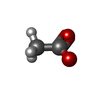


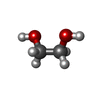

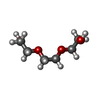









| #2: 化合物 | ChemComp-ACT / #3: 化合物 | #4: 化合物 | ChemComp-SO4 / #5: 化合物 | ChemComp-EDO / #6: 化合物 | #7: 化合物 | #8: 化合物 | ChemComp-GOL / | #9: 水 | ChemComp-HOH / | |
|---|
-詳細
| 研究の焦点であるリガンドがあるか | Y |
|---|---|
| Has protein modification | N |
-実験情報
-実験
| 実験 | 手法:  X線回折 / 使用した結晶の数: 1 X線回折 / 使用した結晶の数: 1 |
|---|
- 試料調製
試料調製
| 結晶 | マシュー密度: 2.78 Å3/Da / 溶媒含有率: 55.68 % |
|---|---|
| 結晶化 | 温度: 292 K / 手法: 蒸気拡散法, ハンギングドロップ法 詳細: 1.0 - 1.25 M ammonium sulfate and 0.1 M sodium acetate pH 4.0 - 5.5 |
-データ収集
| 回折 | 平均測定温度: 100 K / Serial crystal experiment: N |
|---|---|
| 放射光源 | 由来:  シンクロトロン / サイト: シンクロトロン / サイト:  APS APS  / ビームライン: 23-ID-B / 波長: 0.99184 Å / ビームライン: 23-ID-B / 波長: 0.99184 Å |
| 検出器 | タイプ: DECTRIS EIGER X 16M / 検出器: PIXEL / 日付: 2020年11月17日 |
| 放射 | プロトコル: SINGLE WAVELENGTH / 単色(M)・ラウエ(L): M / 散乱光タイプ: x-ray |
| 放射波長 | 波長: 0.99184 Å / 相対比: 1 |
| 反射 | 解像度: 2.35→64.83 Å / Num. obs: 45944 / % possible obs: 97.6 % / 冗長度: 4.01 % / CC1/2: 0.998 / Net I/σ(I): 13.23 |
| 反射 シェル | 解像度: 2.35→2.45 Å / Mean I/σ(I) obs: 2.46 / Num. unique obs: 5396 / CC1/2: 0.872 |
- 解析
解析
| ソフトウェア |
| ||||||||||||||||||||||||||||||||||||||||||||||||||||||||||||||||||||||||||||||||||||||||||||||||||||||||||||||||||||||||||||||||||||||||||||||||||||||||||||||||||||||||||||||||||||||
|---|---|---|---|---|---|---|---|---|---|---|---|---|---|---|---|---|---|---|---|---|---|---|---|---|---|---|---|---|---|---|---|---|---|---|---|---|---|---|---|---|---|---|---|---|---|---|---|---|---|---|---|---|---|---|---|---|---|---|---|---|---|---|---|---|---|---|---|---|---|---|---|---|---|---|---|---|---|---|---|---|---|---|---|---|---|---|---|---|---|---|---|---|---|---|---|---|---|---|---|---|---|---|---|---|---|---|---|---|---|---|---|---|---|---|---|---|---|---|---|---|---|---|---|---|---|---|---|---|---|---|---|---|---|---|---|---|---|---|---|---|---|---|---|---|---|---|---|---|---|---|---|---|---|---|---|---|---|---|---|---|---|---|---|---|---|---|---|---|---|---|---|---|---|---|---|---|---|---|---|---|---|---|---|
| 精密化 | 構造決定の手法:  分子置換 / 解像度: 2.35→64.12 Å / Cor.coef. Fo:Fc: 0.963 / Cor.coef. Fo:Fc free: 0.949 / SU B: 7.99 / SU ML: 0.184 / 交差検証法: THROUGHOUT / ESU R: 0.361 / ESU R Free: 0.224 / 立体化学のターゲット値: MAXIMUM LIKELIHOOD / 詳細: HYDROGENS HAVE BEEN ADDED IN THE RIDING POSITIONS 分子置換 / 解像度: 2.35→64.12 Å / Cor.coef. Fo:Fc: 0.963 / Cor.coef. Fo:Fc free: 0.949 / SU B: 7.99 / SU ML: 0.184 / 交差検証法: THROUGHOUT / ESU R: 0.361 / ESU R Free: 0.224 / 立体化学のターゲット値: MAXIMUM LIKELIHOOD / 詳細: HYDROGENS HAVE BEEN ADDED IN THE RIDING POSITIONS
| ||||||||||||||||||||||||||||||||||||||||||||||||||||||||||||||||||||||||||||||||||||||||||||||||||||||||||||||||||||||||||||||||||||||||||||||||||||||||||||||||||||||||||||||||||||||
| 溶媒の処理 | イオンプローブ半径: 0.8 Å / 減衰半径: 0.8 Å / VDWプローブ半径: 1.2 Å / 溶媒モデル: MASK | ||||||||||||||||||||||||||||||||||||||||||||||||||||||||||||||||||||||||||||||||||||||||||||||||||||||||||||||||||||||||||||||||||||||||||||||||||||||||||||||||||||||||||||||||||||||
| 原子変位パラメータ | Biso mean: 52.157 Å2
| ||||||||||||||||||||||||||||||||||||||||||||||||||||||||||||||||||||||||||||||||||||||||||||||||||||||||||||||||||||||||||||||||||||||||||||||||||||||||||||||||||||||||||||||||||||||
| 精密化ステップ | サイクル: 1 / 解像度: 2.35→64.12 Å
| ||||||||||||||||||||||||||||||||||||||||||||||||||||||||||||||||||||||||||||||||||||||||||||||||||||||||||||||||||||||||||||||||||||||||||||||||||||||||||||||||||||||||||||||||||||||
| 拘束条件 |
|
 ムービー
ムービー コントローラー
コントローラー



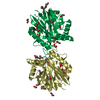





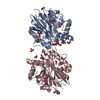
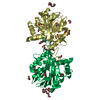

 PDBj
PDBj








